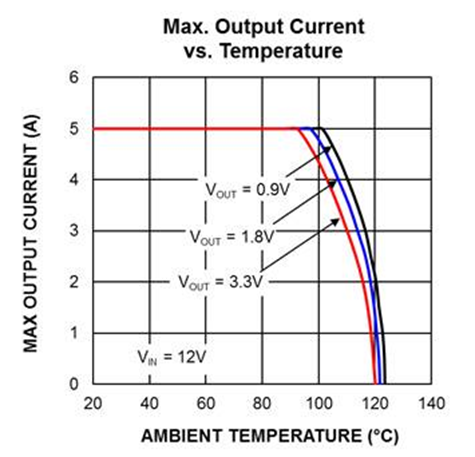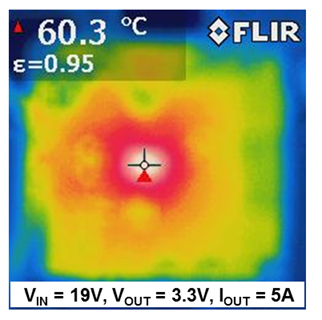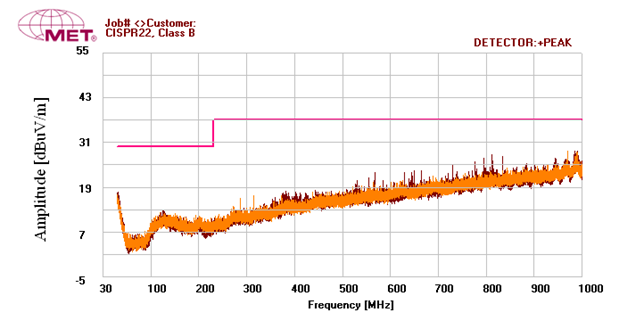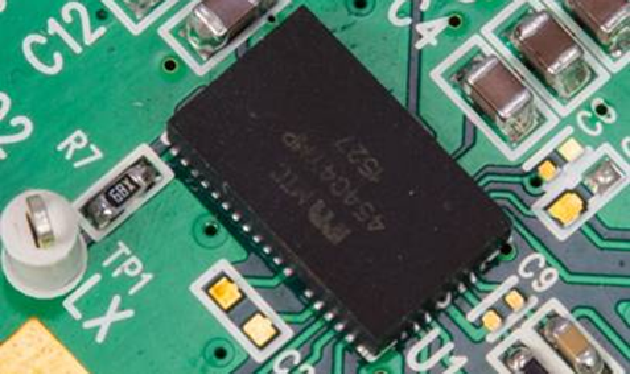Every circuit, from the smallest Internet-of-Things (IoT) home-automation sensor to the largest industrial machine, requires power. The power supply requires effort and board space, but in many applications, the end user will not perceive any value from a better power supply. The design work can be completely unappreciated. In these cases, power modules can be used to eliminate that design effort by functioning as a tested, complete power supply with low noise, high efficiency, and a compact layout. A power module is a single component, one plastic package to be placed on a printed circuit board (PCB), which contains an entire switching power supply (including the inductor). The pulse width modulation (PWM) controller, MOSFET drivers, power MOSFETs, feedback network, and magnetic components are all contained inside the single package. Advances in power module packaging provide exciting benefits for easy and quick design of new products by incorporating passive components into switching regulators, effectively creating system-in-package solutions for power conversion problems. This allows designers to focus on other aspects of the design, decreasing time-to-market and improving other features of their products.

The major design challenges in a power supply are stability, transient response, efficiency, EMI, and layout. With a discretely implemented board-mounted power solution, these effects would need to be tested on every power supply, even if the design was reused with a new layout for a new board. The real-world layout can introduce stability issues, electromagnetic radiation, unexpected transient behavior, or surprising efficiency results — even in a circuit that has been carefully simulated or previously prototyped. This can add an unexpected extra design iteration to a project and possibly delay the entire product release. One of the primary advantages of power modules is that they eliminate these risks. The power supply layout, as far as performance is concerned, is mostly within the power module. The inductor, controller, and power transistors are all packaged together, with fixed, tested, and proven internal connections. The efficiency, transient performance, stability, and EMI are all documented in the datasheet. The line and load transient responses; enable and disable transient responses; and even waveforms for startup into short circuit or fault conditions can be found in the documentation. This gives known good performance, which can be designed in for minimal effort and minimal risk. There is no easier way to implement a board-mounted dc/dc conversion than with a power module.
The second benefit of a power module is the circuit size. The signal routing inside of a module is much more compact than is possible on a PCB. As a result, modules commonly outperform their discretely implemented counterparts in power density. In some applications, this makes the difference between fitting and not fitting the target form factor. Smaller IoT platforms, wearable electronics, and solid-state drives all contain instances when the solution size is a requirement or benefit for the end user. This small size sometimes introduces additional problems with device temperature ratings. Many power modules are only usable to their full current rating for temporary or transient load conditions, and need to be derated to lower currents for steady-state operation. This is partially the natural result of the system thermodynamics. Better thermal design is required to manage the same amount of heat in a smaller space. For example, Microchip uses thermally efficient copper lead-frame packaging techniques that minimize thermal resistances compared to PCB-based or multi-step packaging approaches. This allows Microchip modules to be used up to their full rated current, in steady state operation, for many thermal environments and at higher ambient temperatures.


Lastly, the radiated emissions from a power module are extremely low. The nature of the tight packaging minimizes the distance between components on the phase node and keeps the power transistor gates very close to the power drivers. Best practices in the PCB layout of a discretely implemented power supply would minimize these trace lengths and hopefully not have any EMI issues. However, this wouldn’t be known until the finished power supply is tested. With the power module, these connections are internal to the module, and much shorter than would be possible if each silicon die were packaged separately and connected together on a PCB. In addition, the module can be tested for EMI independently from the circuit into which it is being designed. Microchip modules commonly meet the criteria for CISPR-22 class B ratings, indicated on the datasheet, so there is no uncertainty for the final circuit performance. This not only eliminates the risk of unexpected EMI issues; often, the total EMI is much lower than would be possible without this integrated power solution.

Modules do allow for some level of flexibility as well. Even though the power supply is complete and tested, select key operating parameters can still be adjusted with external components or trace routing. For example, the MIC45404 power module from Microchip allows for selection of output voltage, current limit, and switching frequency by trace routing on the PCB. Internal comparators examine external pins to determine if those inputs are grounded, floating, or tied to the power supply input voltage (using the PCB traces on the board). Based on these connections, the controller will select the output voltage (nine options), switching frequency (three options), and output current limit (three options) without relying on external passive components (or their tolerances). This allows the one module to serve multiple power supply requirements, in one design or across designs, without qualifying and stocking multiple part numbers.
There are many ways to create a bad power supply, but using a power module is not one of them. Modules eliminate the need for inductor selection and minimize the PCB layout effort. Input, output, and compensation networks can all be calculated from straightforward equations in the datasheet, matching application needs based on stability and transient response requirements. This leaves system architects free to spend more time on other parts of the system design, adding value to the end product or improving the overall time-to-market. Small, fast, efficient, easy-to-use power modules represent another level of integration in power components — a technology that promises to remove power from the system design process.








